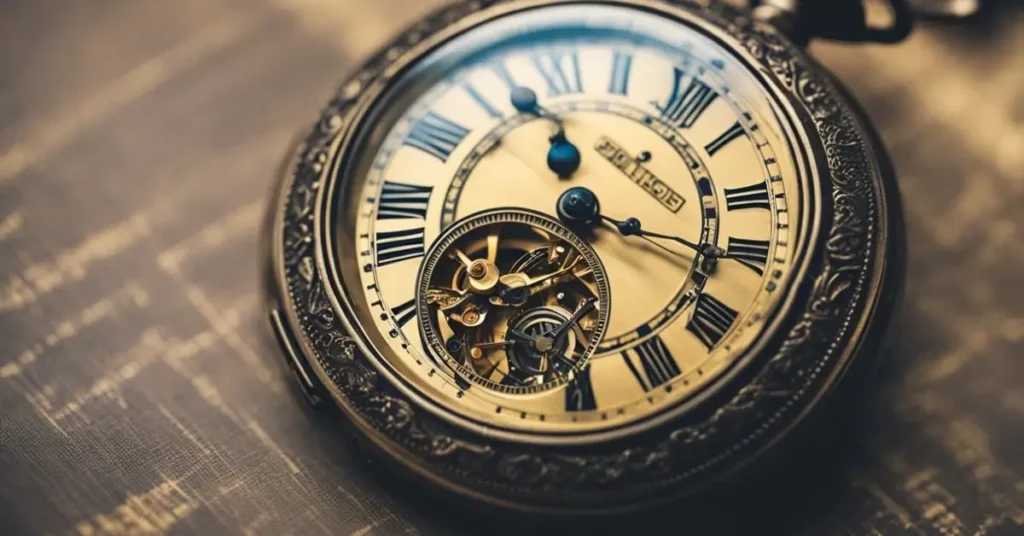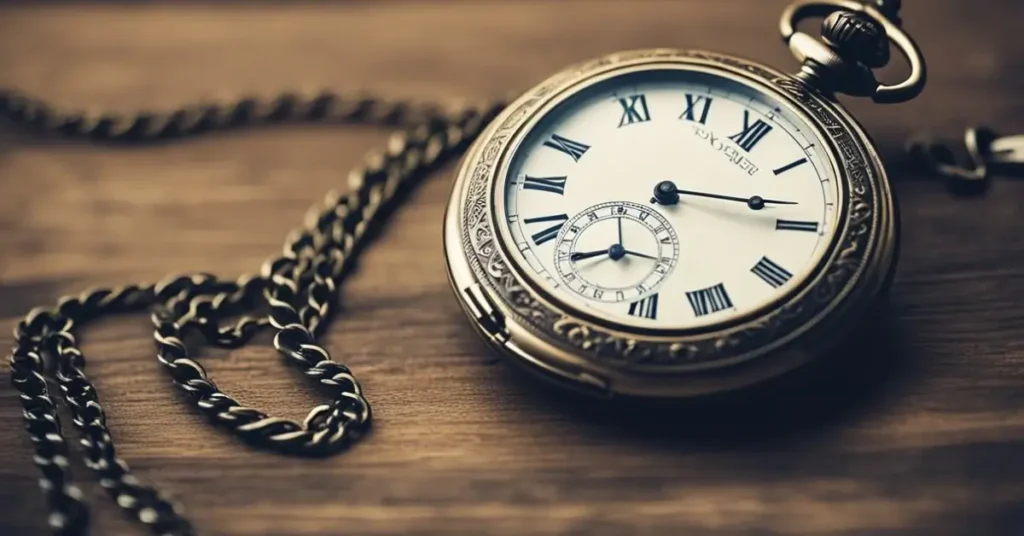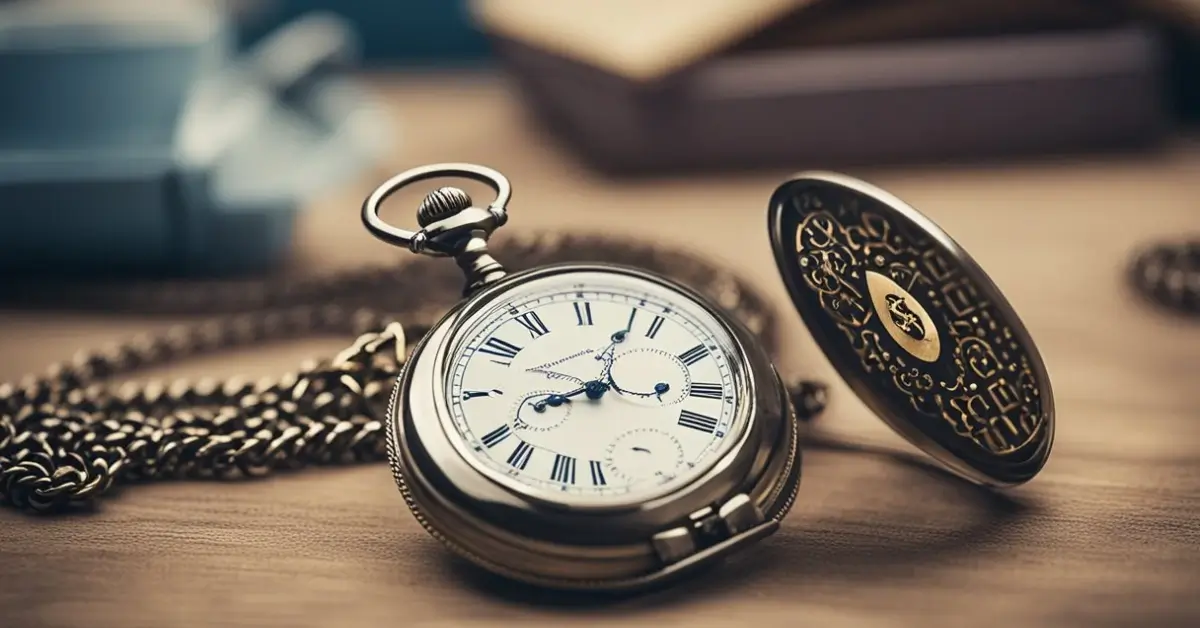As enthusiasts of vintage timepieces, we have always been fascinated by the intricate craftsmanship and timeless elegance of pocket watches. The history of pocket watches is a rich and fascinating one, spanning several centuries and continents. From the earliest spring-driven clocks that appeared in Italy and Germany in the late 15th century to the iconic pocket watches of the 19th and early 20th centuries, these timepieces have played an important role in the evolution of horology.
One of the earliest pioneers of pocket watch history was Peter Henlein, a master locksmith of Nuremberg who was regularly manufacturing pocket watches by 1526. Henlein’s simple spring devices paved the way for the development of more sophisticated timepieces, and by the 16th century, pocket watch manufacture had spread throughout the rest of Europe. Over the centuries, pocket watches have been used for a variety of purposes, from telling time on the battlefield to serving as status symbols for the wealthy and fashionable. Today, pocket watches remain popular among collectors and enthusiasts, and their timeless charm continues to captivate people around the world.
Pocket Watch History – Origins
Pocket watches have a rich history dating back to the early 16th century. In this section, we will explore the origins of pocket watches and the role they played in society.
Pocket Watch History – Invention in Early 16th Century
The first pocket watches were invented in the early 16th century by Peter Henlein from Germany. These early pocket watches were small and portable, making them ideal for people who needed to keep track of time on the go. Prior to the invention of pocket watches, people relied on large and bulky clocks that were difficult to transport.
Henlein’s invention revolutionized the way people kept track of time and quickly gained popularity throughout Europe. By the early 1520s, his spring-loaded design had made its way to England and Scotland, and the pocket watch became an integral part of society.
Role of Nuremberg Eggs
One of the earliest types of pocket watches was known as the Nuremberg Egg. These watches were egg-shaped and were often engraved with intricate designs. They were highly sought after by the upper class and were seen as a status symbol.
The Nuremberg Egg was named after the city of Nuremberg, where they were first produced. These watches were often given as gifts to royalty and were highly prized for their beauty and craftsmanship.
In conclusion, the invention of the pocket watch in the early 16th century revolutionized the way people kept track of time. The Nuremberg Egg played a significant role in the popularity of pocket watches and became a symbol of wealth and status.
Pocket Watch History – Evolution and Development

Pocket watches have a rich history that dates back to the 16th century. Over time, these timepieces have undergone significant changes and improvements, making them more precise and reliable. In this section, we will explore the evolution and development of pocket watches.
Pocket Watch History – Improvements in the 17th Century
The 17th century was a crucial period for the development of pocket watches. During this time, watchmakers began to experiment with different designs and mechanisms to improve accuracy and reliability. One of the most significant improvements was the introduction of the balance spring, which allowed for more precise timekeeping. This innovation was first used by Christiaan Huygens in 1675 and quickly became a standard feature of pocket watches.
Another important development was the use of jewels in the watch movement. Watchmakers began to use synthetic rubies and sapphires to reduce friction and wear in the gears and pivots. This innovation not only improved accuracy but also increased the durability and longevity of pocket watches.
Industrial Revolution Impact
The Industrial Revolution had a profound impact on the evolution of pocket watches. With the introduction of new manufacturing techniques and machinery, watchmakers were able to produce pocket watches on a larger scale. This led to a significant reduction in the cost of production, making pocket watches more accessible to a broader range of people.
During this period, watchmakers also began to experiment with new materials, such as stainless steel and brass, which were more durable and resistant to corrosion. These materials not only improved the functionality of pocket watches but also made them more aesthetically pleasing.
In conclusion, the evolution and development of pocket watches have been marked by significant improvements and innovations over the centuries. From the introduction of the balance spring to the use of synthetic jewels and new materials, these timepieces have come a long way since their inception.
Pocket Watch History – Golden Age of Pocket Watches
During the 19th century, pocket watches reached the height of their popularity. As the Industrial Revolution took hold, mass production made pocket watches more affordable and accessible to the general public. The pocket watch became a symbol of status and sophistication, and owning one was a sign of wealth and success.
Pocket Watch History – Popularity in the 19th Century
Pocket watches were not only popular among the upper class, but also among the working class. They were an essential tool for railroad workers, allowing them to accurately time the arrival and departure of trains. This led to the standardization of time zones in the United States, making it easier for people to travel and conduct business across the country.
The 19th century also saw the introduction of new features in pocket watches, such as the chronograph and the repeater. The chronograph allowed users to time events with precision, while the repeater chimed the time at the push of a button, making it easier to tell time in the dark.
Significance in American West

Pocket watches played a significant role in the American West, where they were used by cowboys, prospectors, and lawmen. The rugged terrain and harsh conditions of the West required durable and reliable timepieces, and pocket watches fit the bill. They were often carried in protective cases and attached to chains or fobs for easy access.
In fact, some of the most famous figures of the American West were known for their pocket watches. Wyatt Earp, for example, was known to carry a Waltham pocket watch, while Wild Bill Hickok was said to have been carrying a pocket watch when he was shot and killed during a poker game.
Overall, the Golden Age of pocket watches in the 19th century marked a significant period in the history of timekeeping. The popularity and accessibility of pocket watches, combined with their durability and reliability, made them an essential tool for people from all walks of life.
Decline and Resurgence
As standardized watch parts were produced in the 1800s, the pocket watch became available to the general public. As you can imagine, they were very popular for decades. However, it wasn’t until wristwatches entered the market during the war that the pocket watch would start to lose its popularity.
Influence of Wristwatches
The introduction of wristwatches was a significant blow to the popularity of pocket watches. Wristwatches were more convenient and practical, especially for soldiers during World War I. Soldiers needed to keep their hands free, and wristwatches allowed them to do just that. The wristwatch’s practicality and convenience quickly made it the go-to timepiece, and the pocket watch’s popularity declined.
Modern Revival
Recently, the classic pocket watch has seen a resurgence in popularity. People are drawn to the elegance and sophistication of pocket watches, which are often seen as a statement piece. Pocket watches are also considered a collector’s item, with vintage and antique pocket watches fetching high prices at auctions.
In conclusion, the pocket watch has had a long and storied history, with its popularity rising and falling over the years. Despite the rise of wristwatches, the classic pocket watch has managed to maintain its appeal, and its popularity continues to grow.
Cultural Significance

Pocket watches have had a significant cultural impact throughout history, representing both status and style. In this section, we will explore how pocket watches have influenced symbolism, art, and literature.
Symbolism and Status
During the 15th century, pocket watches were used to distinguish between craftsmen and members of the upper class of society, as only the wealthy could afford them. The pocket watch became a symbol of status, wealth, and sophistication, often passed down as family heirlooms. The intricate designs and craftsmanship of pocket watches made them highly sought after by collectors, further perpetuating their cultural significance.
In addition to status, pocket watches also held symbolic meaning. They represented the importance of punctuality, precision, and order, values that were highly regarded during the Industrial Revolution. Pocket watches were also associated with the idea of timelessness, as they were often passed down through generations, becoming a part of family history and tradition.
Pocket Watch History – Influence on Art and Literature
Pocket watches have been a popular subject in art and literature, reflecting their cultural significance. In literature, pocket watches have been used as symbols of time and mortality. In Lewis Carroll’s “Alice’s Adventures in Wonderland,” the White Rabbit’s pocket watch represents the passage of time, while in Jules Verne’s “Around the World in Eighty Days,” Phileas Fogg’s pocket watch is a symbol of his strict adherence to punctuality.
In art, pocket watches have been depicted in various styles, from realistic to abstract. The surrealist artist Salvador Dali often incorporated pocket watches in his artwork, such as in his famous painting “The Persistence of Memory,” where melting pocket watches represent the fluidity of time.
Overall, pocket watches have played a significant role in cultural history, representing status, symbolism, and style. From their intricate designs to their symbolic meaning, pocket watches have influenced art, literature, and culture, leaving a lasting legacy in history.
Our Thoughts about the Pocket Watch History
As we reflect on the history of pocket watches, we can’t help but marvel at the ingenuity and craftsmanship that went into creating these timepieces. From the earliest models in the 15th century to the more intricate designs of the 19th and 20th centuries, pocket watches have played an important role in the evolution of timekeeping.
One thing that stands out to us is the level of detail and precision that went into creating each pocket watch. From the intricate engravings on the case to the delicate movements inside, every aspect of the pocket watch was carefully crafted to ensure accuracy and reliability.
We also appreciate the variety of styles and designs that emerged over the years. From the classic look of a simple silver or gold pocket watch to the more ornate designs featuring diamonds and other precious stones, there was a pocket watch to suit every taste and occasion.
Of course, as technology advanced and wristwatches became more popular, the pocket watch began to lose its prominence. But even today, there are collectors and enthusiasts who appreciate the beauty and history of these timeless timepieces.
FAQ – Pocket Watch History
When was pocket watch invented?
Delving into pocket watch history, we find that the pocket watch was invented in the early 16th century. This significant milestone in pocket watch history is attributed to Peter Henlein, a German clockmaker. His invention, as highlighted in pocket watch history, marked the dawn of portable timekeeping.
Who invented pocket watch?
In the annals of pocket watch history, Peter Henlein, a German clockmaker, is credited with the invention of the pocket watch in the early 16th century. As pocket watch history unfolds, Henlein’s creation marked the beginning of portable timekeeping devices. This pivotal moment in pocket watch history transformed how people interacted with time, making it more personal and accessible.
What was the significance of the pocket watch?
The pocket watch history reveals its importance as a symbol of status and precision in earlier centuries. As we delve deeper into pocket watch history, we find that it revolutionized timekeeping, making it portable and accessible. Furthermore, pocket watch history showcases its role in various professions, from railway conductors to sailors, ensuring accuracy in their tasks.
If you liked this blog post about the topic: Pocket Watch History, don’t forget to leave us a comment down below to tell us about your experience with it.






Your point of view caught my eye and was very interesting. Thanks. I have a question for you.